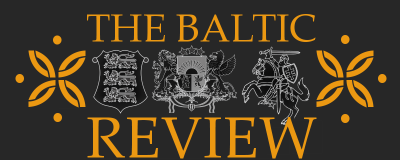Estonia leads the way with advanced e-services for citizens
Estonia is emerging as one of the most advanced e-societies in the world. Its latest innovation is an e-residency card for non-nationals. Much of Estonia’s e-government infrastructure has benefitted from investments under the European Regional Development Fund.
Estonian e-services have already made a big splash with the international media. For CNN Estonia is ‘A digital nation run on tablets and smart phones’. BBC reported on‘Paperless and online government services’. Le Monde labelled the country as the ‘cybersentinelle de l’Occident’. Wall Street Journal and The Times of India wrote extensively on the subject: ‘Electronic ID Would Allow a Digital Without a Physical Presence’ and ‘Digital residency clicks with Indian entrepreneurs’.
Over the past ten years Estonia has been one of the world’s leaders in the use of Internet-based services for its citizens. As a result, Estonians now enjoy a comprehensive range of public and private e-services from healthcare to elections and income tax. And Estonian experts are called by governments world-wide to explain how the miracle happened.
This digital progress is the result of partnership between a forward-thinking government, a pro-active ICT sector, and a tech-savvy population, supported by funding from the European Regional Development Fund, which helped in developing IT infrastructure, networks, and applications for online services.
‘E-stonia’
Underpinning today’s E-stonia – as it has been dubbed – is the country-wide availability of Wi-Fi Internet, which can even be accessed in the forests. 71 % of households have Internet capability and fast Wi-Fi connections are available in more than 1 100 public locations. All Estonian schools are connected to the Internet, in fact, people now have the option of educating themselves through an online university for military.
77 % of the population aged 16-74 uses the Internet and citizens are routinely using e-services for e-elections, e-taxes, e-police, e-healthcare, e-banking, and e-school.
Digital access has become the norm and in 2012, more than 94 % of income tax declarations were presented through the e-tax board. 98 % of banking transactions in Estonia are conducted through the Internet.
‘A citizen can do basically everything online, even divorce. Only for marriages you still need papers’, jokes one of the digital affairs counsellors at the Estonian Permanent Representation to the EU.
lectronic ID card

The Estonian President Thomas Hendrik Ilves slipped one of the first Estonian e-IDs to the US President Barack Obama, during his recent visit to Tallinn.
Almost 90 % of inhabitants (1.1 million people) have an Estonian e-ID card which serves as an identity document and, within the European Union, also as a travel document.
The card contains a chip with personal information and is digital proof of ID which provides authentication when utilising online services. In addition to the ID card, Estonians can also use a mobile phone to provide identity for online services.
Education and healthcare
In January 2010 Estonia began using a medical information system which allows citizens to view their own digital medical history simply by confirming their identity using an ID card. There is no need for paper prescriptions for buying medicine from a pharmacy – doctors issue e-prescriptions which can be used for a purchase in any chemists using their ID card.
Parents of schoolchildren can access their kids’ grades and homework online by using the e-school application. The education system has also been taken online with exam results centralised through the state portal. Applications for universities are submitted via the state’s Internet-based system.
e-elections
Since 2005, everyone in Estonia has been able to vote electronically via the Internet, using an ID card or mobile ID, from home or even while travelling abroad. In the recent parliamentary elections held in March, 30.5 % of voters used the e-voting system.
e-business
An entrepreneur can create a company in Estonia directly from his personal computer. The e-business portal’s record for the set-up and registration of a company is 18 minutes.
The system also recognises ID cards from Belgium, Portugal, Lithuania, and Finland, with more to come.
e-residency
Online services were extended in 2015 to non-residents thanks to Estonia’s unique and cutting-edge e-residency project. In fact non-residents of the country can now also get a digital e-residency ID to allow them access to public and private e-services and to operate in Estonia. This does not entail any residential rights and cannot be used as a physical identification card or travel document. Some EUR 300 000 to EUR 500 000 will be invested yearly in the e-residency programme by 2020.
Source: e-estonia.com, Panorama Inforegio Magazine Nr. 52





























Comments